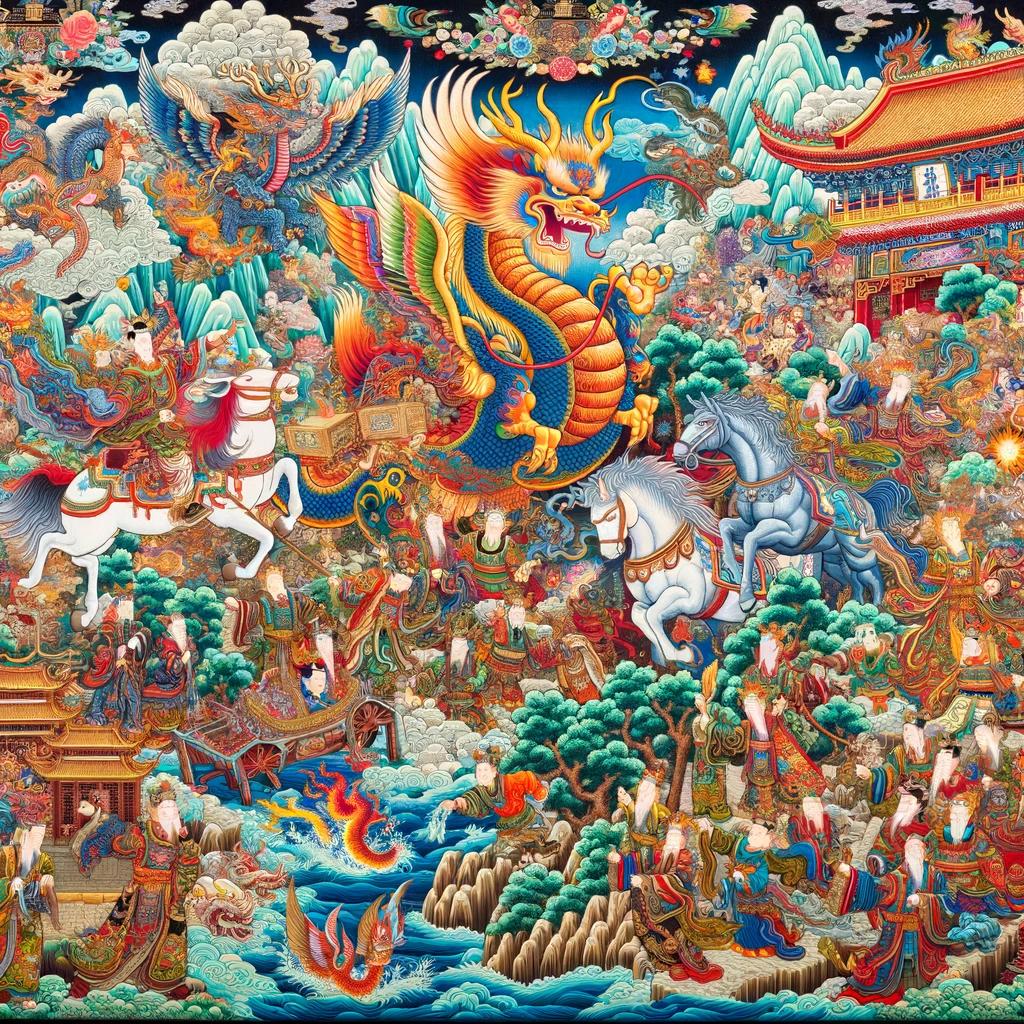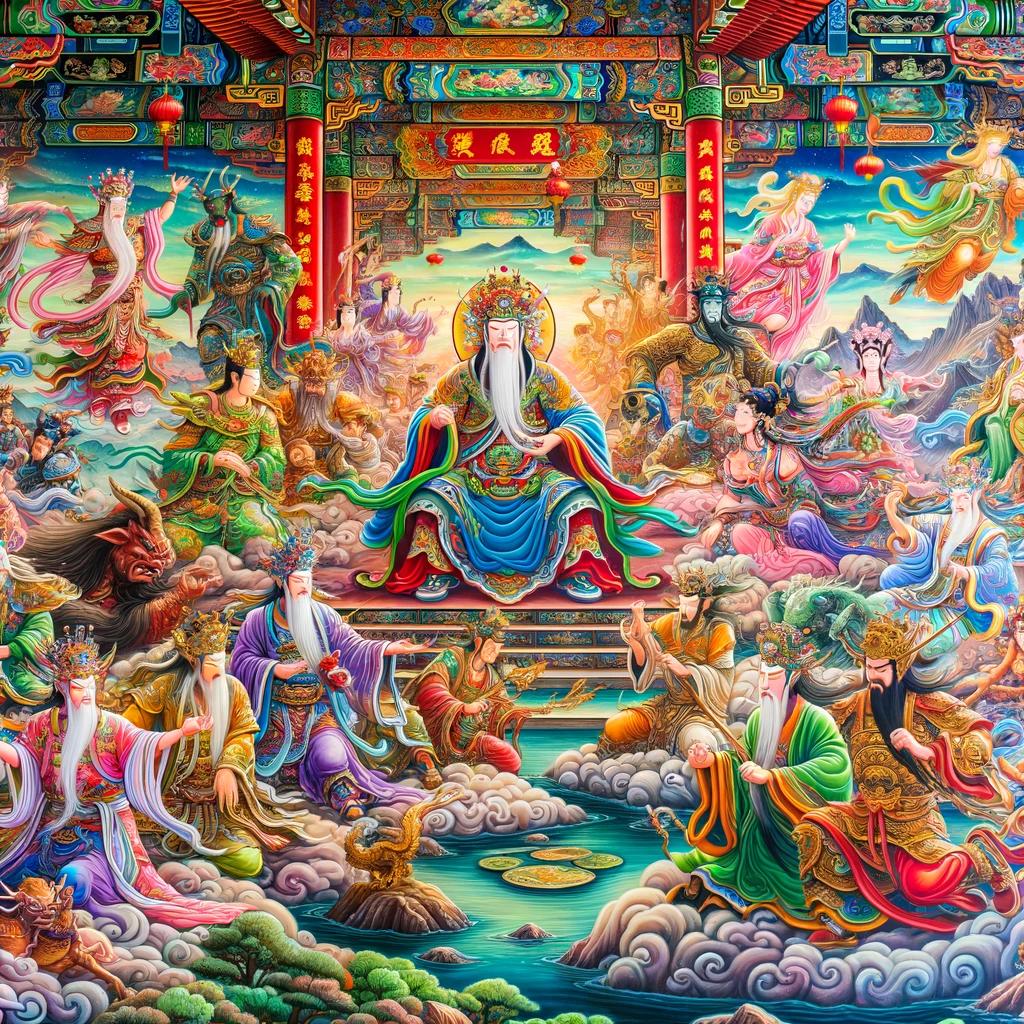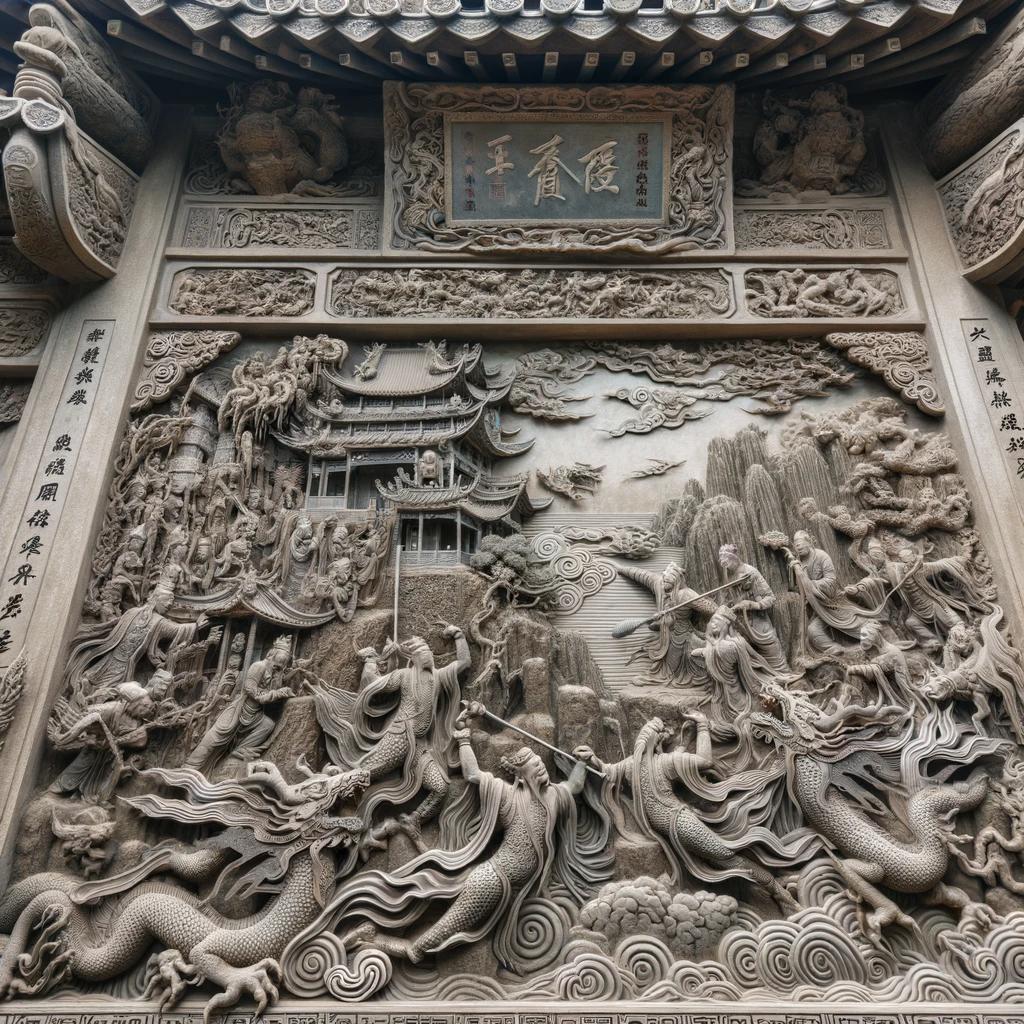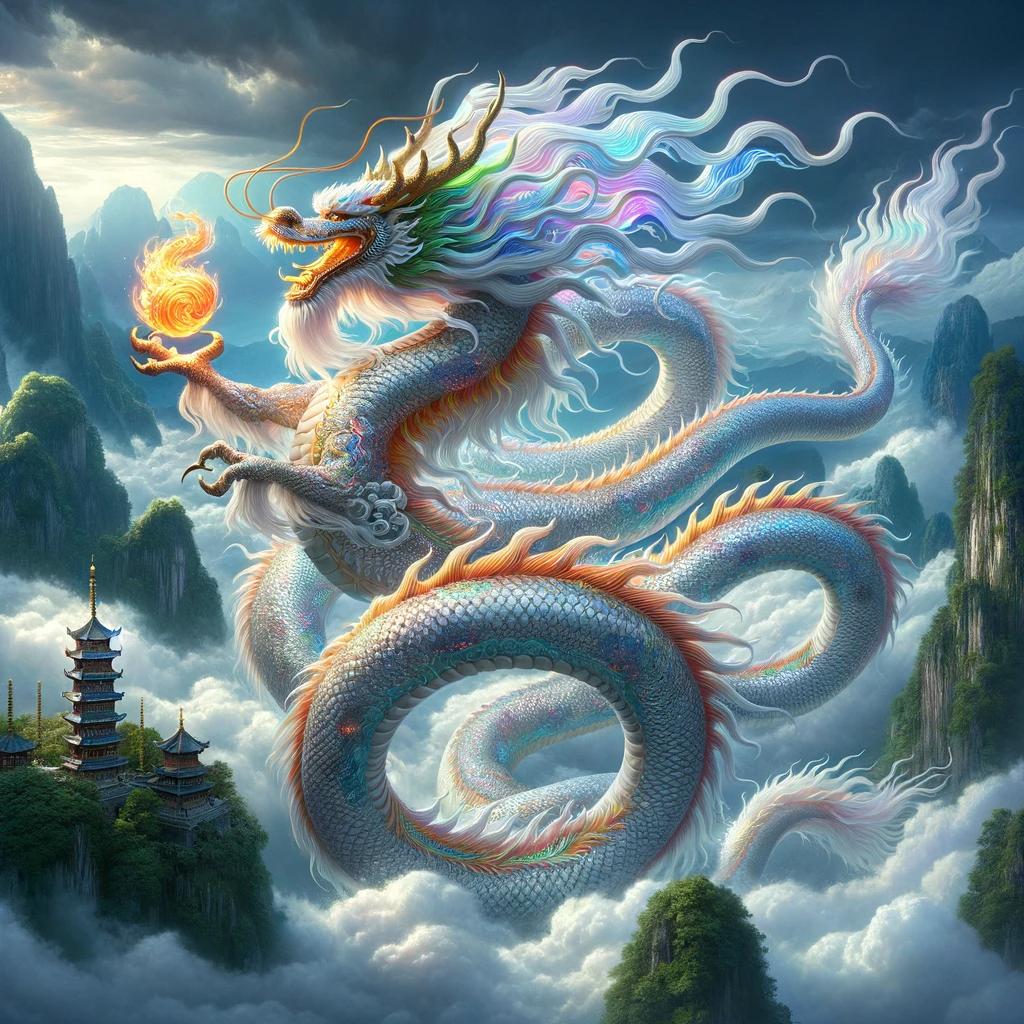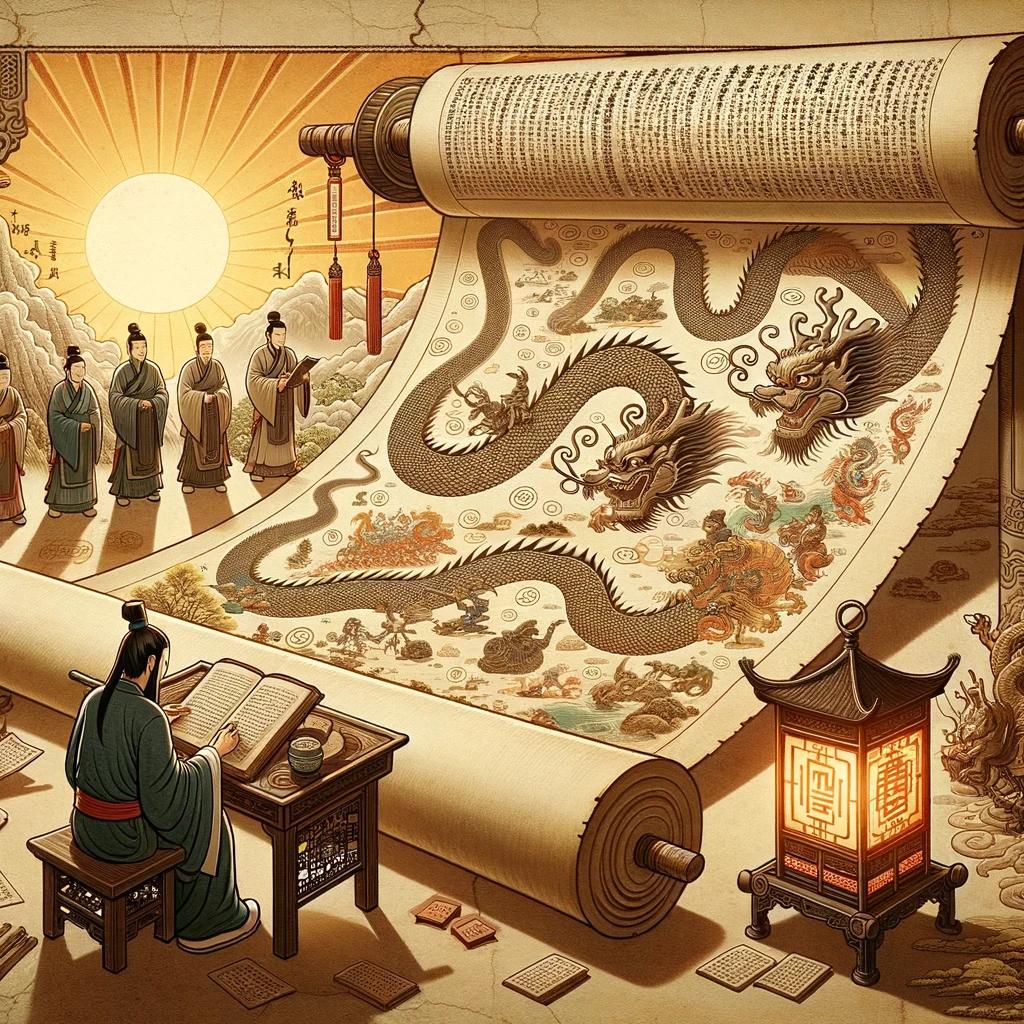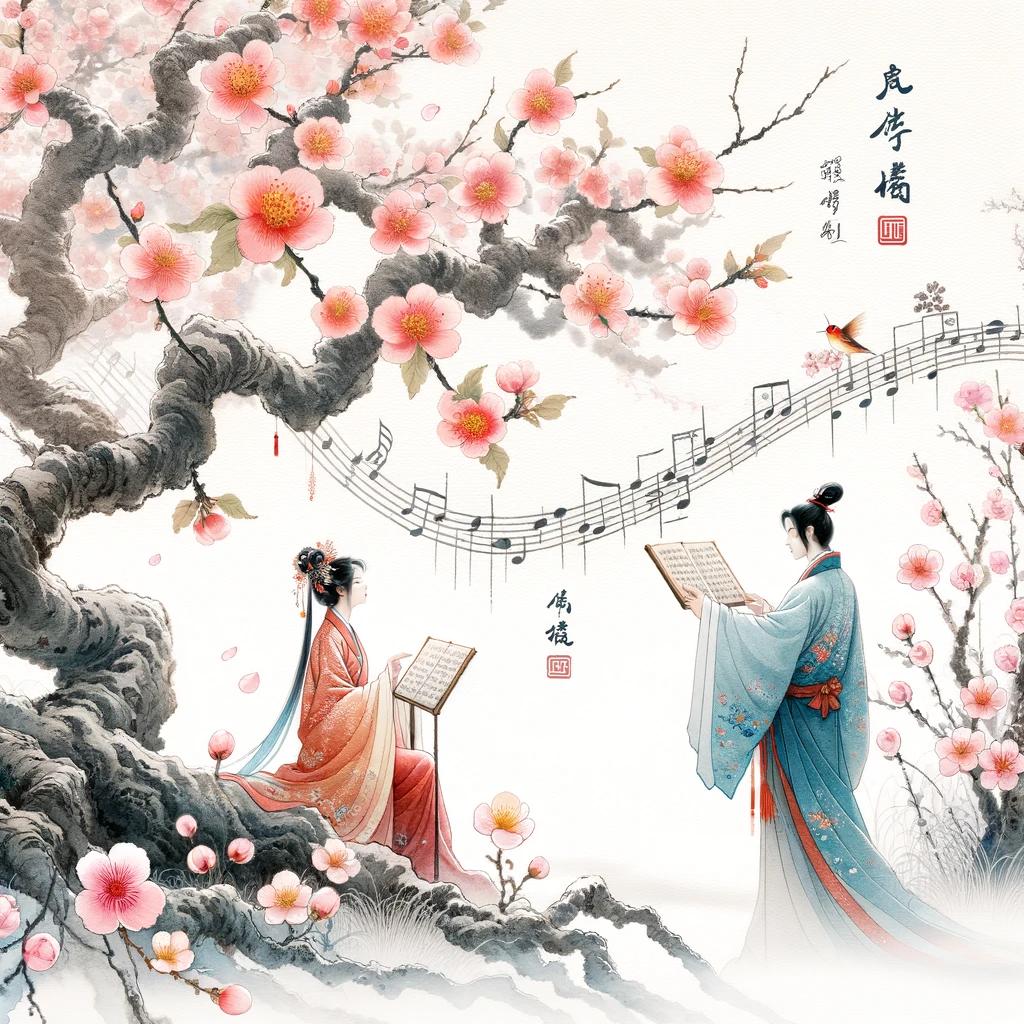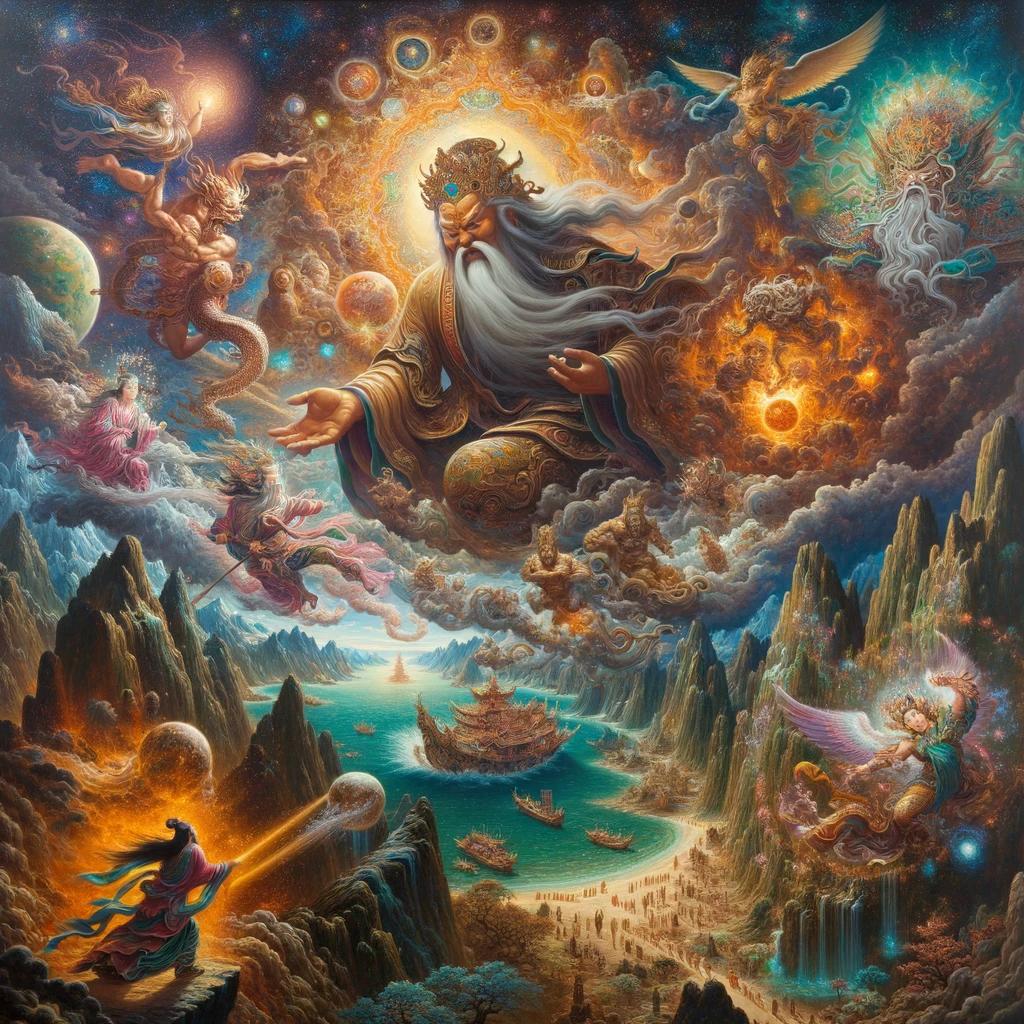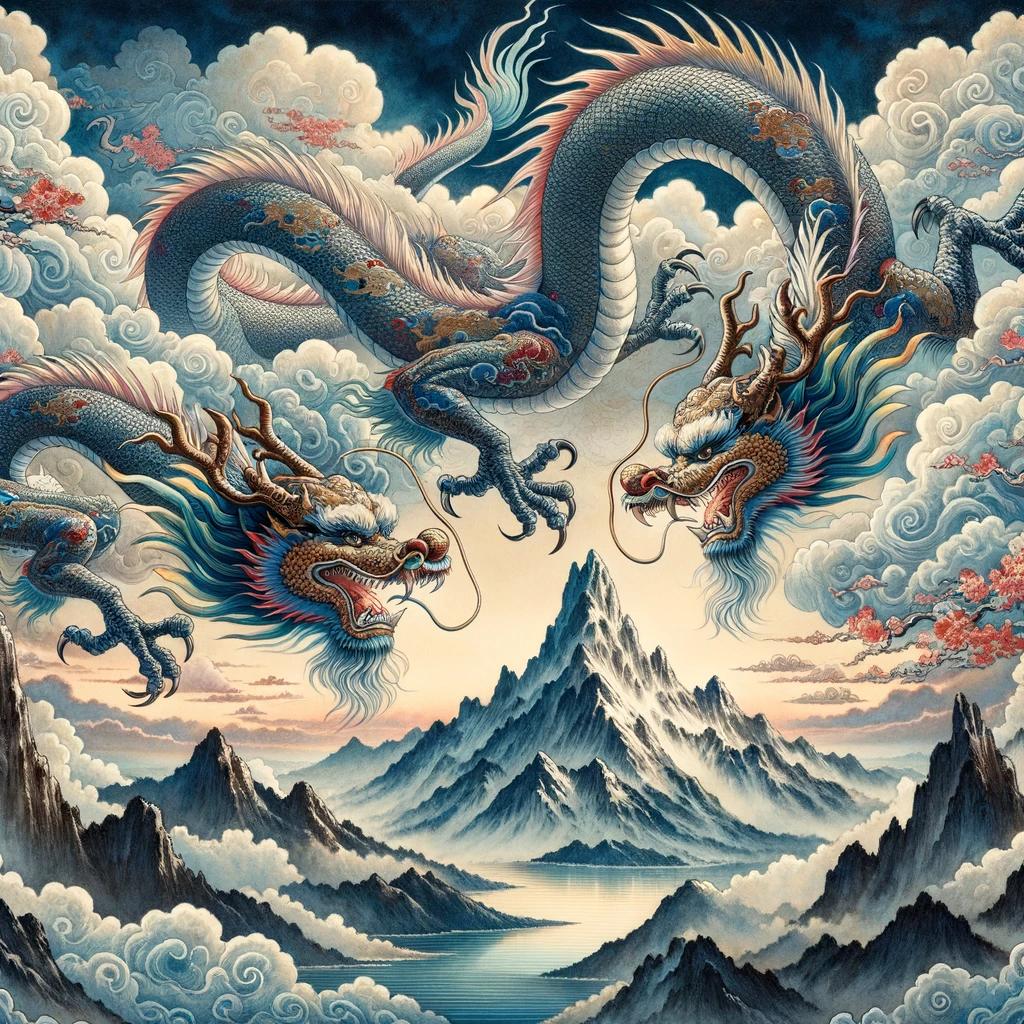Chinese Myths and Folktales: Discover the Enchanting World of Chinese Folklore
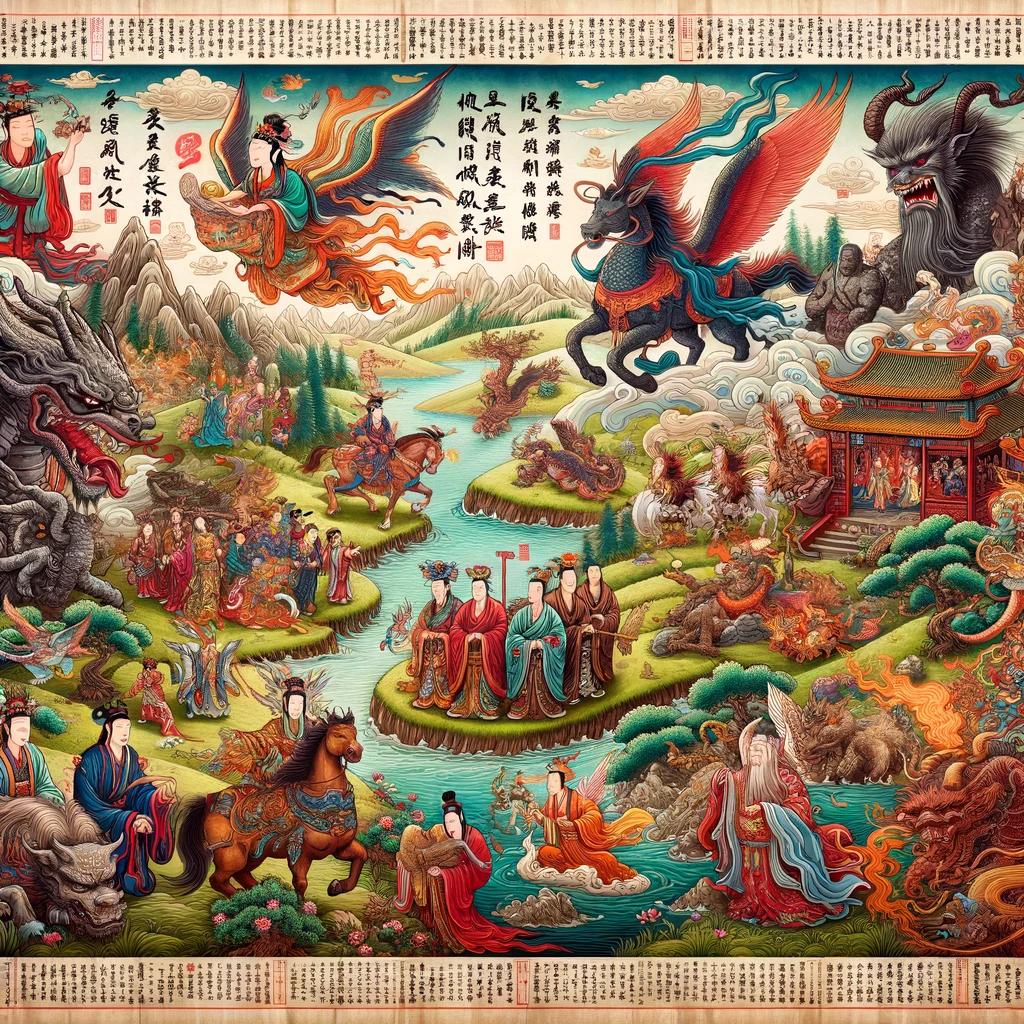
Chinese Myths and Folktales hold a significant place in Chinese culture, influencing storytelling traditions both orally and in writing. This rich folklore collection encompasses over 200 fables and tales, featuring ancient demons, magical swords, diabolical wizards, and powerful gods.
These captivating stories have inspired literature, art, and even contemporary pop culture. Dive into the enchanting world of Chinese folklore, exploring the origins, cultural significance, and impact of these myths and folktales.
Uncover the mesmerizing themes, motifs, and moral lessons woven into this captivating folklore tradition.
Start your journey into Chinese Myths and Folktales by delving into their importance and discovering the diverse range of stories waiting to be explored.
Understanding Chinese Myths and Folktales
Chinese Myths and Folktales hold a significant place in Chinese culture, serving as a reflection of the nation’s rich heritage and traditions. This section delves into the importance, origins, and cultural significance of Chinese folklore, providing insights into the stories and beliefs that have shaped generations.
The Importance of Chinese Folklore
Chinese folklore plays a vital role in preserving and transmitting the collective wisdom, values, and beliefs of the Chinese people. These tales serve as a moral compass, imparting lessons about virtues, ethics, and human nature.
They also offer a window into the historical and social contexts of ancient Chinese society, showcasing its customs, rituals, and worldview.
Exploring the Origins of Chinese Myths
The origins of Chinese myths are deeply rooted in ancient legends, historical events, and religious practices. These myths have evolved and intertwined with various philosophical and cultural influences over thousands of years.
They often draw inspiration from Chinese cosmology, ancestral worship, and folklore motifs, blending reality and the supernatural to create captivating narratives.
Cultural Significance of Chinese Folktales
Chinese folktales reflect the collective identity and cultural values of the Chinese people. They emphasize themes of filial piety, loyalty, justice, and the eternal struggle between good and evil. These tales provide insights into the interconnectedness of nature and humanity, the power of destiny, and the harmony sought in Chinese society.
Chinese Folktales with Morals
Chinese folktales have long been a source of wisdom and moral guidance for generations. These captivating stories not only entertain but also impart valuable lessons to readers. Through vivid narratives and memorable characters, Chinese folktales convey profound teachings that resonate with readers of all ages.
One of the distinct features of Chinese folktales is their emphasis on moral values. Each story presents a specific moral lesson, encouraging readers to reflect on their own behavior and choices.
These tales cover a wide range of themes, including honesty, kindness, bravery, perseverance, and humility.
One example of a Chinese folktale with a moral is “The Foolish Old Man Who Moved the Mountains.”
This well-known story teaches the importance of determination and resilience in overcoming obstacles. In the tale, an old man and his family face the daily challenge of living near two massive mountains that obstructed their path.
Undeterred by the seemingly impossible task, the old man resolutely decides to move the mountains, inspiring his children and neighbors to join him in his quest. The story emphasizes the value of perseverance and the belief that no obstacle is insurmountable if one persists.
Another popular Chinese folktale that imparts moral values is the story of “The Butterfly Lovers.” This tragic tale teaches the importance of true love and loyalty. The story follows the forbidden love between two young scholars, Liang Shanbo and Zhu Yingtai.
Despite societal and family pressures, their love remains unwavering. The story emphasizes the significance of staying true to one’s heart, even when faced with adversity and societal norms.
Chinese folktales with morals not only entertain readers but also provide insightful teachings that can be applied in daily life.
They serve as reminders of the values that are essential for personal growth and social harmony. These stories continue to inspire and enlighten readers, transcending time and cultural boundaries.
Chinese Myths and Legends: Gods and Heroes
Chinese mythology is replete with captivating tales of gods and heroes, steeped in ancient traditions and beliefs.
These stories provide insights into the Chinese worldview, their values, and the concept of divinity.
In the realm of Chinese myths, gods are revered and embody various powers and domains. Some notable deities include Nuwa, the creator goddess who repaired the shattered sky; Guan Yu, the god of loyalty and righteousness; and Chang’e, the moon goddess.
Each god has a unique role and often represents virtues or natural phenomena.
Heroes, on the other hand, are mortal individuals who exhibit exceptional bravery, virtue, and resourcefulness. They often overcome immense challenges and demonstrate unwavering loyalty to their cause or kingdom.
Legendary figures like the Monkey King, Mulan, and Yue Fei are celebrated for their valor and the embodiment of Chinese ideals.
Chinese myths and legends intertwine with historical events, blurring the lines between fact and fiction.
They teach valuable lessons, inspire heroism, and offer guidance on morality and ethical conduct. These tales also serve as a cultural repository, preserving traditions and beliefs passed down through generations.
Through the stories of gods and heroes, Chinese mythology captures the essence of the human spirit and the quest for transcendence.
It delves into the supernatural realm, giving glimpses of the divine and offering insights into the complex tapestry of Chinese culture.
Chinese Mythical Creatures and Beings
Chinese mythology is filled with a rich assortment of mythical creatures and beings that captivate the imagination. These entities are woven into the fabric of Chinese folklore, playing significant roles in various stories and legends.
From divine dragons to mischievous spirits, each creature holds its own unique symbolism and cultural significance.
Dragons
Dragons, known as “long” in Chinese mythology, are revered creatures that symbolize power, wisdom, and good fortune. These mythical creatures are depicted as majestic, serpentine beings with scales, claws, and sometimes wings.
Chinese dragons are believed to control the weather, bring rain for agricultural prosperity, and protect against evil spirits.
Phoenixes
Phoenixes, known as “fenghuang,” are divine birds in Chinese mythology associated with immortality, rebirth, and harmony. These magnificent creatures embody grace, beauty, and gracefulness. They are often portrayed with vibrant plumage and are believed to symbolize auspicious beginnings and good fortune.
Qilin
The Qilin, also known as the “Chinese unicorn,” is a mythical creature revered for its benevolence, wisdom, and guidance. Often depicted with the body of a deer, scales or fur, and a horn on its head, the Qilin signifies good luck, protection, and prosperity.
It is considered an auspicious omen and associated with the birth of great leaders.
Nüwa
Nüwa is a prominent goddess in Chinese mythology responsible for the creation of humanity. Often depicted as a half-human, half-serpent being with a gentle and benevolent nature, Nüwa is associated with fertility, marriage, and maintaining order in the world.
She is revered as a protector of humankind and the bringer of balance and harmony.
Jingwei
Jingwei is a legendary bird in Chinese mythology known for its determination and resilience. According to folklore, Jingwei was once a young girl who drowned at sea and transformed into a bird.
This creature tirelessly carries twigs and pebbles from the land to the sea, attempting to fill it, symbolizing the indomitable spirit and the pursuit of overcoming adversity.
Yaochi Jinmu
Yaochi Jinmu, also known as the Queen Mother of the West, is a prominent deity in Chinese mythology associated with immortality, healing, and rejuvenation. She is often depicted as an elegant goddess adorned in royal robes and holding the peach of immortality.
Yaochi Jinmu rules over the mythical realm of Kunlun Mountain, said to be the dwelling place of Daoist immortals and the source of celestial elixirs.
These are just a few examples of the captivating mythical creatures and beings found in Chinese folklore.
Each entity holds its own symbolism and significance in the narratives they inhabit, adding depth and enchantment to the world of Chinese myths and folktales.
Impact of Chinese Myths and Folktales on Literature and Art
Chinese myths and folktales have had a profound impact on literature and art throughout history.
These captivating stories have served as a wellspring of inspiration for countless writers, painters, and other artists. They provide a rich tapestry of characters, settings, and themes that resonate with audiences worldwide.
Chinese myths and folktales have influenced various genres of literature, from classical works to contemporary fiction. Writers have drawn upon these stories to create compelling narratives, incorporating elements of Chinese folklore into their own unique storytelling styles.
The enduring popularity of adaptations such as “Journey to the West” and “The Legend of the White Snake” showcases the lasting impact of Chinese myths in literature.
Artists have also been captivated by the imagery and symbolism found in Chinese myths and folktales.
Painters have depicted mythical creatures, legendary heroes, and epic battles, bringing these vivid tales to life on canvas. Traditional Chinese art forms, such as ink paintings and silk tapestries, often feature scenes inspired by these revered stories.
Furthermore, Chinese myths and folktales have played a significant role in shaping the visual aesthetics of various art forms. From costume design in theater productions to the intricate details of porcelain and pottery, the influence of Chinese folklore can be seen in the decorative arts.
Sculptures, carvings, and statues have also been crafted to represent the mythical beings and gods featured in these tales.
The impact of Chinese myths and folktales extends beyond literature and art.
Their themes and motifs have also found their way into music, dance, and even contemporary media. With their universal appeal and timeless messages, these stories continue to inspire and captivate audiences of all ages.
Asian Mythology Books: A Selection of Chinese Folklore
Explore the captivating world of Chinese folklore through a selection of incredible Asian mythology books. These books delve into the rich tapestry of Chinese myths and legends, offering readers a deeper understanding of the cultural heritage and storytelling traditions of China.
‘Chinese Fairy Tales and Legends’
Step into a realm of enchantment with ‘Chinese Fairy Tales and Legends.’ This extraordinary book showcases a compilation of captivating tales filled with whimsical characters, magical creatures, and timeless morals. Immerse yourself in the wonders of Chinese folklore and discover why these stories have captured the hearts of generations.
‘A Treasury of Chinese Folk Tales’
‘A Treasury of Chinese Folk Tales’ invites readers on a journey through the rich tapestry of Chinese culture. Uncover the hidden gems of traditional Chinese storytelling with tales of heroic deeds, supernatural encounters, and profound wisdom.
Immerse yourself in the vivid imagery and captivating narratives that have shaped the cultural landscape of China for centuries.
These books are essential additions to any collection, offering a fascinating insight into the power and beauty of Chinese myths and folklore.
Dive into the richness of Chinese culture and embark on an adventure through the realms of mythology with these exceptional titles.
Discovering Chinese Folklore in ‘Chinese Myths and Folktales’
Explore the captivating world of Chinese folklore through the pages of ‘Chinese Myths and Folktales.’ This section delves into various aspects of Chinese folktales, providing a deeper understanding of the themes and motifs that shape these intriguing stories.
Themes and Motifs in Chinese Folktales
Chinese folktales encompass a wide range of themes and motifs that reflect the cultural values and beliefs of the Chinese people. Immerse yourself in tales of courage, honor, love, and wisdom as they weave together throughout these captivating narratives.
From stories of filial piety and respect for ancestors to tales of the triumph of good over evil, discover the profound and timeless themes that resonate within Chinese folktales.
Symbolism and Imagery
Chinese folktales are rich in symbolism and imagery, often utilizing metaphors and allegories to convey deeper meanings.
Explore the significance of symbols like dragons, phoenixes, and lotus flowers, which represent prosperity, power, and purity, respectively. Uncover the hidden messages behind the vivid descriptions of landscapes, weather patterns, and natural elements that add depth and beauty to these tales.
Moral Lessons and Ethical Values
Chinese folktales are not only entertaining but also serve as moral guides, imparting valuable life lessons and promoting ethical values. Through the adventures of heroic characters and their encounters with supernatural beings, these stories teach virtues such as humility, honesty, loyalty, and perseverance.
Discover the profound wisdom embedded within Chinese folktales and the lasting impact they have on shaping moral character.
Analysis of Selected Stories
Embark on an analytical journey as we delve into the intricacies of selected Chinese folktales. Through close examination and interpretation, we aim to shed light on the narrative structures, character development, and underlying symbolism within these stories.
From well-known tales like ‘The Butterfly Lovers’ to lesser-known gems like ‘The Cowherd and the Weaving Maiden,’ gain a deeper appreciation for the literary craftsmanship and cultural nuances present in these ancient narratives.
By exploring the themes, motifs, and intricate storytelling techniques found within ‘Chinese Myths and Folktales,’ readers can uncover the wealth of knowledge and cultural insight that Chinese folklore offers. Immerse yourself in the captivating narratives that have stood the test of time, gaining a greater understanding of the rich tapestry of Chinese culture and its enduring legacy.
Chinese Mythology in Modern Pop Culture
The rich tapestry of Chinese Myths and Folktales continues to captivate audiences in modern pop culture. From the silver screen to the pages of graphic novels, these captivating stories have found their way into various forms of entertainment, leaving an indelible mark.
Chinese Myths and Folktales in Films and TV
Chinese Myths and Folktales have been a source of inspiration for filmmakers and television producers, resulting in a plethora of captivating adaptations. From epic period dramas to action-packed fantasies, these visual mediums have brought to life the enchanting world of Chinese folklore.
Some notable examples include:
- Blockbuster films like “Crouching Tiger, Hidden Dragon” that showcase mythical martial arts prowess in a visually stunning manner.
- “The Monkey King” trilogy, which explores the adventures of the legendary Monkey King and his companions in a dazzling display of magic and heroism.
- TV series such as “Legend of the White Snake,” a timeless love story between a snake spirit and a mortal, blending romance and supernatural elements.
Influence on Contemporary Fiction and Graphic Novels
The influence of Chinese Myths and Folktales extends beyond the cinematic realm.
The allure of these tales has also permeated contemporary fiction and the world of graphic novels, captivating readers of all ages.
Authors and artists have skillfully incorporated Chinese mythology into their storytelling, resulting in imaginative and immersive works.
These creations explore the rich symbolism, complex characters, and moral values found within Chinese folklore.
Some noteworthy examples include:
- Graphic novels like “Journey to the West” by Gene Luen Yang, which retells the epic adventures of the Monkey King in a visually stunning format.
- The “Shadow of the Fox” series by Julie Kagawa, which blends Japanese and Chinese mythologies to create a spellbinding world filled with mystical creatures and ancient prophecies.
- Contemporary fiction works such as “The Poppy War” by R.F.
Kuang, where elements of Chinese mythology seamlessly blend with elements of historical fantasy, immersing readers in a world of gods, magic, and war.
Through their presence in films, TV shows, and literature, Chinese Myths and Folktales continue to captivate audiences, introducing them to the enchanting world of Chinese folklore and leaving a lasting impact on popular culture.
.











